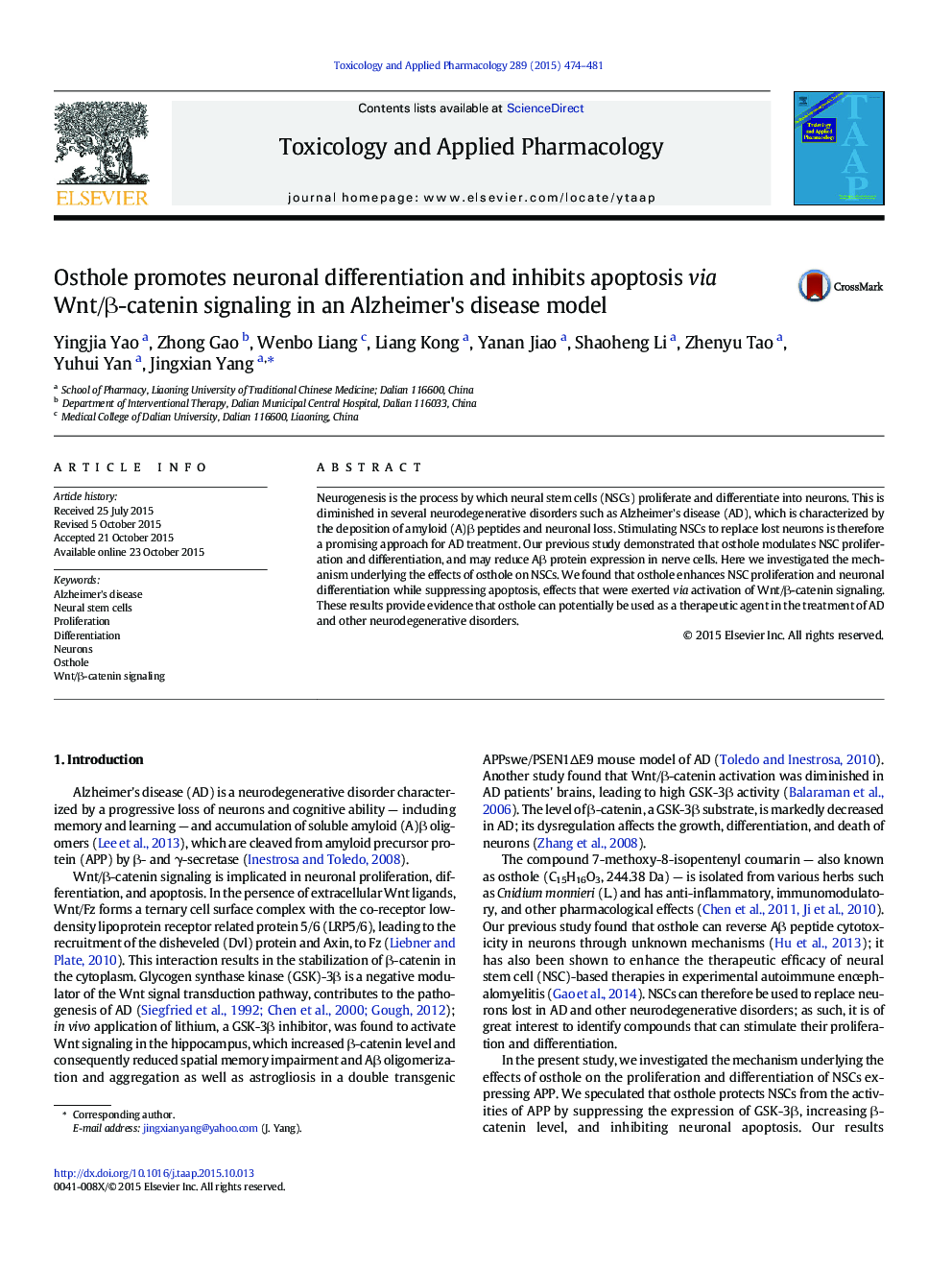| Article ID | Journal | Published Year | Pages | File Type |
|---|---|---|---|---|
| 2568280 | Toxicology and Applied Pharmacology | 2015 | 8 Pages |
•An Alzheimer's disease model was successfully established by transfecting APP gene into neural stem cells in vitro.•Roles of osthole in experimental AD cells were studied.•Osthole promotes proliferation and differentiation into neurons and inhibits accumulation of Aβ1–42 peptide and apoptosis.•Osthole exerts protection via Wnt/β-catenin signaling pathway.
Neurogenesis is the process by which neural stem cells (NSCs) proliferate and differentiate into neurons. This is diminished in several neurodegenerative disorders such as Alzheimer's disease (AD), which is characterized by the deposition of amyloid (A)β peptides and neuronal loss. Stimulating NSCs to replace lost neurons is therefore a promising approach for AD treatment. Our previous study demonstrated that osthole modulates NSC proliferation and differentiation, and may reduce Aβ protein expression in nerve cells. Here we investigated the mechanism underlying the effects of osthole on NSCs. We found that osthole enhances NSC proliferation and neuronal differentiation while suppressing apoptosis, effects that were exerted via activation of Wnt/β-catenin signaling. These results provide evidence that osthole can potentially be used as a therapeutic agent in the treatment of AD and other neurodegenerative disorders.
